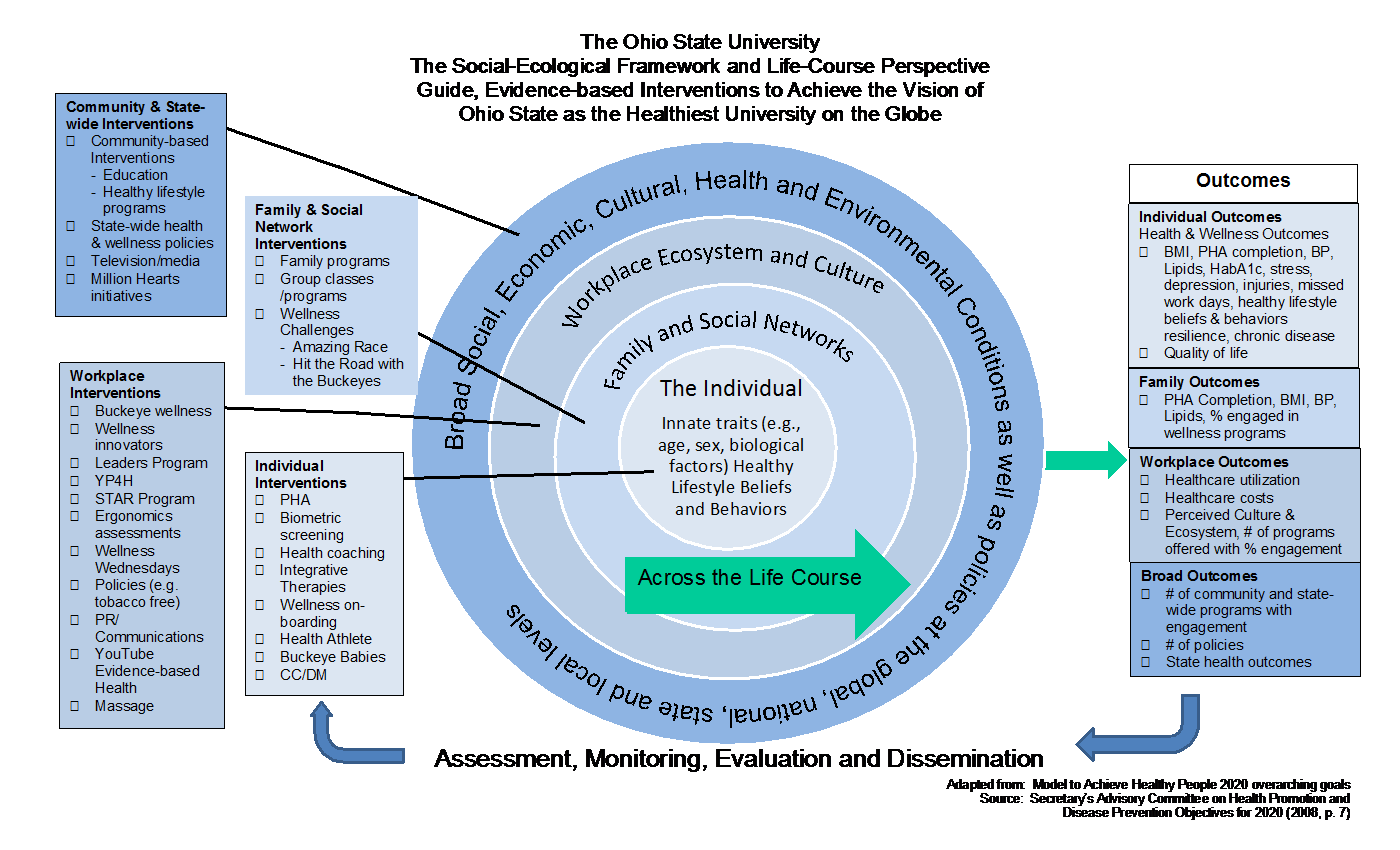The Ohio State University’s (OSU) vision to be the healthiest university and community on the globe is certainly a lofty goal, but one that they are clearly committed to achieving. In our recent Wednesday Webinar with Megan Amaya, Stefanie Morrow and Melissa Walters, HERO members got the chance to hear more about how OSU is working towards becoming “the healthiest university in the world.”
Their main method for achieving this goal is the OSU socioecological framework, which guides their programming, activities, events and more.

The framework puts strong emphasis on the individual, giving examples for each level on the left-hand side and snippets of what’s included in the OSU scorecard on the right. The scorecard focuses on three main areas: fiscal health of the university, culture and environment, and population health.
Recently, OSU finalized their three year strategic plan for health and well-being (HWB), which has several tangible goals. They have also established five year goals for biometrics. Given that the world of HWB is always changing, OSU keeps their well-being goals to shorter time frames than we might typically see.
We asked our audience about their organization’s goals and what matters most for driving results. 64% said leadership support while 36% responded that having healthy choices as the default choices is the biggest factor. No one in our audience indicated grassroots efforts or having programs and services at every level of SEM are most important. While our guests mentioned that OSU wouldn’t be able to do what they do without leadership support, they also said that we need to be recognizing all of these factors. Grassroots efforts, for example, are more plausible when there is clear leadership support, making the latter a good starting place.
One of the challenges around leadership support is making it visible to end users. How do you show that leadership is invested? OSU conducts a culture survey, which demonstrates that people often don’t feel supported even though they actually are. When we asked our audience how confident they are that their own organization’s leaders see the interaction between workplace ecosystem, family, and social networks/individual choices, we got quite the mix of responses. 11% said they felt very confident, 33% said somewhat confident, 33% were unsure, and 22% said they were not very confident. Our consolation here was that no one replied with “not at all confident.”
We also asked our audience about which dimensions of the socioecological framework they are measuring and/or intervening upon. 18% are working with community health outcomes, 45% with family outcomes, 55% with the number of health policies they introduce or improve, 64% with perceived culture and ecosystem, and 73% with quality of life.
So is it about getting people engaged or is it about getting people active so that they’re more likely to be engaged? Similar to our previous Wednesday Webinar with Jennifer Flynn, our guests compared this conundrum to the chicken or the egg. Likely, if we work from both ends to engage employees and also get them more active, we will positively impact the most people and OSU will move closer to their goal of becoming the healthiest university and community on the globe.
HERO members can view the recording of this webinar in our Resource Center.
